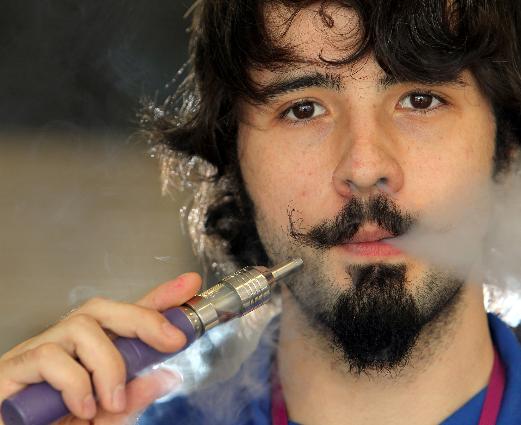The New York Times: E-Cigarette Use by U.S. Teenagers Rose Last Year, Report Says
WASHINGTON — E-cigarette use continued to rise among young teenagers and preteens in the United States last year, according to new federal data, but cigarette smoking overall did not increase, suggesting that, at least so far, fears that the devices would hook a new generation on traditional cigarettes have not come to pass.
Experts said it was too soon to answer the essential question about e-cigarettes: Will they cause more or fewer people to smoke? But the broad trend in youth cigarette smoking has been down in recent years, and researchers have been taking note of that.
“We do not have any strong evidence that it is encouraging smoking among kids but neither do we have good evidence that it won’t over time,” said Kenneth E. Warner, a professor of public health at the University of Michigan.
About 5 percent of middle-school students reported using e-cigarettes in 2015, up from about 4 percent in 2014, according to data from the Centers for Disease Control and Prevention. That is a substantial increase from 2011, when less than 1 percent of middle schoolers used the devices.
Use for high-school students was also trending up, with 16 percent reporting using the devices in 2015, up from 13 percent in 2014. But the change was not statistically significant because of technical reasons having to do with the sizes and distributions of the samples. In 2011, the rate was just 1.5 percent for high schoolers.
Policy makers have worried that increased e-cigarette use could make it more likely young people would shift to traditional tobacco cigarettes, which are more toxic. But that does not seem to be happening yet. About 9 percent of high schoolers reported smoking cigarettes in 2015, unchanged from 2014, and down from 16 percent in 2011.
Among middle schoolers, about 2 percent reported smoking traditional cigarettes in 2015, statistically unchanged from 2014. In 2011, about 4 percent of middle schoolers smoked traditional cigarettes.
The popularity of electronic cigarettes has soared since they were introduced in the mid-2000s and the devices have swept through the market so quickly that they have outpaced the federal government’s intention to regulate them. (Final rules from the Food and Drug Administration, which regulates tobacco products, have been expected for months.) Bonnie Herzog, an analyst with Wells Fargo, estimates the total vapor market, including e-cigarettes and other related products, such as liquids and personal vaporizers, totaled about $3.3 billion in the United States 2015.
E-cigarettes, designed to deliver nicotine without the toxic tar of conventional cigarettes, have prompted a split among public health experts with some saying the devices will hook new generations of smokers and undo hard-won progress on smoking rates and others saying they will help older, addicted smokers quit.
The answer is not yet clear, in part because there is not enough data on use to tell. But it is important: Cigarette smoking is still the single largest cause of preventable death in the United States, killing about 480,000 people a year. While smoking rates have dropped drastically since the 1960s, there are still more than 40 million Americans who smoke.
Professor Warner said what stood out was the fact that the rate of e-cigarette use had slowed from its earlier more rapid rise, a shift that he said was too early to interpret and that smoking of traditional cigarettes, after many years of declines, had not gone down.
“I’m disappointed, and a bit surprised, not to see another decline in cigarette smoking, even if small,” he said. As for e-cigarettes, If anything, use seems to be flattening out.”
Young people are a particularly vulnerable bunch, and many public health experts agree that with so little known about the long-term effects of e-cigarettes, the fact that so many youths have started using them is worrying, even if they do not use them as a bridge to traditional cigarettes. Others argue that even nicotine can be harmful. In all, about three million middle and high school students used e-cigarettes in 2015, the data showed, up from 2.46 million in 2014.
“No form of youth tobacco use is safe,” said Dr. Thomas R. Frieden, the director of the C.D.C. in a statement. “Nicotine is an addictive drug and use during adolescence may cause lasting harm to brain development.”
The data, from the National Youth Tobacco Survey, which is a pencil-and-paper questionnaire administered to a large sample of middle- and high-school students across the country, had a bright spot: Hookah use declined for high school students, falling to about 7 percent from about 9 percent in 2014.
http://www.nytimes.com/2016/04/15/health/e-cigarettes-smoking-teenagers.html?_r=3


